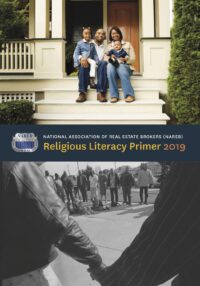Orientation/Classification: Catholic
Adherents Consider Themselves: Catholic/Christian
House of Worship: Church/Parish/Cathedral
First Point of Contact: Priest, Sister, Bishop or lay leader Women are not ordained in the Catholic Church.
Population: Approximately 800 of the 21,000 parishes in the U.S. are predominantly African-American. There are roughly 3 million Black Catholics in the U.S., making this population larger than membership of the AME Church.
GREETING
A priest should be addressed as “father” and a bishop should be addressed as “bishop.” Consecrated women, or nuns, should be addressed as “sister” or “mother.”
PHYSICAL INTERACTION
Black Catholics and Catholic congregations are usually conservative. Touch between genders should be limited, and you should ask before shaking hands or hugging someone of the opposite sex.
FOOD
Catholics observe ritual fasting. Many Catholics fast the 40 days of Lent and participate in obligatory days of abstinence. During Lent, abstinence means that Catholics do not eat meat on Fridays. When fasting, a person is permitted to eat one full meal, as well as two smaller meals that together are not equal to a full meal, over the course of the day. For members of the Catholic Church, fasting is obligatory from age 18 until age 59, and abstinence is bindings after age 14. Besides Lent, other penitential times are customarily accompanied by fasting or abstinence. These include Advent, the Ember Days, the Rogation Days, Fridays throughout the year, and vigils of important feast days. Catholic fasting traditions vary around the world.
OTHER (GENDER, DRESS, ETC.)
Dress should be formal, professional and modest.
SCHEDULING MEETINGS
On holy days of obligation, Catholics are obliged to participate in Mass. Every Sunday is a holy day of obligation, as are six other days throughout the year.
HISTORY
On April 16, 1968, Father Herman Porter, a Black priest from Rockford, Illinois, convened the first meeting of the Black Catholic Clergy Caucus in Detroit. Fifty-eight Black priests, along with at least one brother and woman religious (or sister), gathered to draft the statement that inaugurated the national Black Catholic Movement. Its provocative opening words were: “The Catholic Church in the United States, primarily a white racist institution, has addressed itself primarily to white society and is definitely a part of that society.”
Later that year, Sister Martin de Porres Grey organized the National Black Sisters’ Conference, challenging Black Sisters to involve themselves in the liberation of Black people. The sisters’ statement was no less radical than that of the priests. The National Convention of Black Lay Catholics was organized in 1969, and by 1970, these allied organizations had exerted enough pressure on the national organization of U.S. Catholic bishops to win official approval for a National Office for Black Catholics, based in Washington, DC.
While these Black Catholic organizations were new, the presence of Black Catholics in the Americas was not. There have been Catholics of African descent in the Americas for as long as there have been Catholics in the Americas. The early 20th century saw the mass movement of AfricanAmericans from the rural South to the urban North and West, known as “the Great Migration.” As Black migrants moved into Catholic metropolises such as Chicago and Detroit, some white Catholics openly resisted what they took to be an invasion of “their turf.” They formed racial covenants to exclude Black families from buying homes and intimidated, harassed and attacked those families that managed to do so. Many white Catholics began a long, fraught process of leaving their inner-city parishes behind and moving to the suburbs.
Nationally, the Black Catholic population grew from less than 300,000 to nearly one million members between 1940 to 1975, while its center of gravity shifted from the coastal South to the industrial North.
The Black Catholic Movement culminated in 1984 when the ten Black bishops in the United States declared that the American Black Catholic community had “come of age.” After more than a decade of activism, scholarship and struggle, it was finally possible for Black Catholics to be, in their words, both “authentically Black” and “truly Catholic.”
